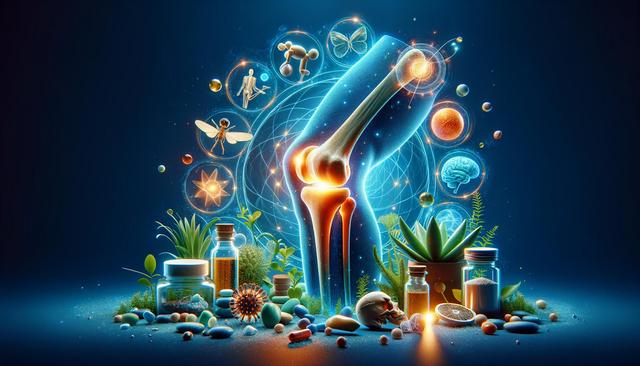Recognizing the Early Signs of Joint Problems
Joint pain can develop gradually, often starting with subtle symptoms that are easy to overlook. Identifying the early signs of arthritis is essential for effective management. These early indicators may include slight discomfort during movement, swelling around joints, and sensations of warmth. Another common symptom is stiffness in morning hours, which usually eases as the day progresses. Paying attention to these signs allows individuals to seek medical advice early, potentially slowing the progression of joint-related conditions.
One frequent concern is knee pain when climbing stairs. This type of pain may suggest cartilage wear or inflammation and should not be dismissed as mere aging. Additionally, people often wonder about joint cracking meaning—while occasional cracking is usually harmless, frequent or painful popping sounds could indicate underlying joint instability or arthritis. Keeping a symptom journal can be helpful when consulting a healthcare provider, ensuring accurate diagnosis and timely intervention.
Common Causes Behind Joint Discomfort
Joint pain can stem from various causes, ranging from injury to chronic diseases. Arthritis, both osteoarthritis and rheumatoid arthritis, is among the most prevalent reasons for persistent joint issues. Osteoarthritis results from wear and tear on the joints, while rheumatoid arthritis is an autoimmune condition where the body’s immune system attacks joint tissues.
Other contributing factors include:
- Past injuries, such as fractures or ligament tears
- Repetitive stress from occupational or physical activities
- Obesity, which places added pressure on joints
- Poor posture or improper body mechanics
Understanding the root cause is crucial in determining how to treat arthritis effectively. For instance, treatment approaches for inflammatory arthritis differ from those for degenerative conditions. A medical evaluation often includes imaging tests and blood work to pinpoint the diagnosis.
Diet and Lifestyle: Their Role in Joint Health
What you eat can significantly affect joint health. Certain foods can trigger inflammation, leading to increased joint pain and stiffness. Individuals experiencing joint discomfort should be aware of foods that hurt joints. These typically include:
- Highly processed foods
- Sugar-laden snacks and beverages
- Red meat and high-fat dairy products
- Foods high in trans fats
In contrast, an anti-inflammatory diet rich in omega-3 fatty acids, antioxidants, and fiber can support joint health. Incorporating foods like fatty fish, leafy greens, nuts, and berries may help reduce inflammation and improve overall mobility. Hydration and maintaining a healthy weight also play a significant role in minimizing joint stress and discomfort.
Regular physical activity, particularly low-impact exercises such as swimming, walking, or yoga, can help maintain joint flexibility. However, it’s important to avoid overexertion and to consult a healthcare provider before beginning any new exercise routine.
Treatment Options for Joint Pain
When addressing how to treat arthritis or general joint pain, a combination of medical and non-medical interventions is often most effective. Treatment plans are usually tailored depending on the severity and cause of the symptoms. Common treatment strategies include:
- Over-the-counter or prescribed anti-inflammatory medications
- Physical therapy to strengthen muscles and improve flexibility
- Joint injections, such as corticosteroids, for more severe inflammation
- Assistive devices like braces or orthotics
In cases where conservative treatments do not provide relief, surgical options such as joint replacement may be considered. Additionally, alternative therapies like acupuncture or massage therapy can complement traditional treatment methods, although their effectiveness varies by individual.
Keeping open communication with healthcare providers ensures that treatments are adjusted as symptoms change, helping individuals find the most appropriate and sustainable solutions for their condition.
Monitoring and Preventing Future Joint Issues
Proactive monitoring and preventive care are key to managing long-term joint health. Even after symptoms are managed, periodic assessments help detect any changes early. Lifestyle adjustments can go a long way in preventing joint pain from worsening.
Simple strategies include:
- Maintaining a healthy body weight
- Stretching regularly to preserve joint mobility
- Using ergonomic furniture and tools to reduce joint strain
- Practicing good posture during daily activities
For individuals with a family history of arthritis or those already experiencing early signs of arthritis, regular check-ins with a healthcare provider can help track developments and adjust care plans as needed. Recognizing symptoms like stiffness in morning routines or knee pain when climbing stairs should prompt a closer look into joint health, rather than being dismissed as routine aging.
By staying informed and proactive, individuals can enhance their quality of life and maintain independence, even when facing joint-related challenges.
Conclusion: Taking Control of Joint Health
Joint pain doesn’t have to define your daily experience. By recognizing early signs of arthritis, addressing symptoms like stiffness in morning hours and knee pain when climbing stairs, and being mindful of foods that hurt joints, individuals can take meaningful steps toward comfort and mobility. Understanding joint cracking meaning and knowing how to treat arthritis through a combination of medical support and healthy habits empowers individuals to take control of their joint health. With the right approach, it’s possible to manage discomfort and maintain an active, fulfilling lifestyle.




Leave a Reply